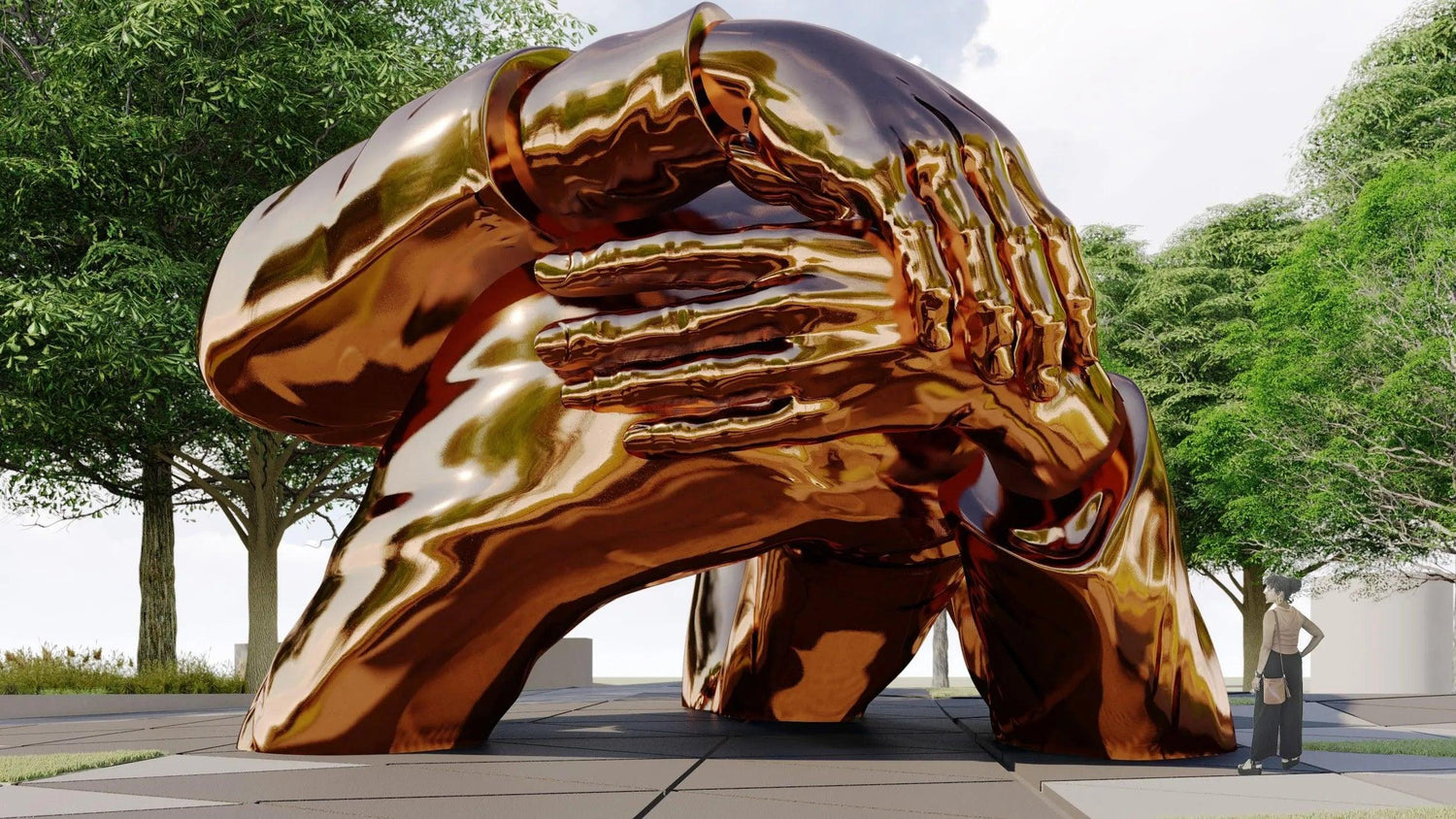The Unveiling of the Martin Luther King Jr. and Coretta Scott King Statue in Boston

Introduction
The city of Boston recently unveiled a new memorial sculpture dedicated to Martin Luther King Jr. and Coretta Scott King. The 22-foot statue, titled "The Embrace," by artist Hank Willis Thomas, aims to honor the relationship between the iconic civil rights leaders. However, the reception of the sculpture has been mixed, with some praising it while others express consternation and even mockery.
The Inspiration Behind "The Embrace"
"The Embrace" was inspired by a 1964 photograph of Martin Luther King Jr. and Coretta Scott King hugging after King received the Nobel Peace Prize. Hank Willis Thomas, the artist behind the sculpture, wanted to capture the emotional and spiritual connection between the Kings. He believed that a physical embrace symbolized both protection and love.
The sculpture itself is a 19-ton bronze work composed of over 600 pieces welded together. It features two pairs of disembodied arms, one with a bracelet and the other wearing a suit jacket. Below the statue, the plaza is adorned with diamond-shaped stones reminiscent of African-American quilting tradition.
Mixed Reactions and Controversy
The unveiling of "The Embrace" immediately generated a range of reactions. Some individuals, like Washington Post columnist Karen Attiah, criticized the sculpture for reducing the Kings to "body parts." Attiah argued that the monument misrepresented Martin Luther King Jr.'s radicalism and overlooked his fierce critiques of white moderates. Others, like Boston-based activist Chip Goines, took a more lighthearted approach, comparing the sculpture to "two disembodied arms & hands hugging a butt."
Even Coretta Scott King's first cousin, Seneca Scott, expressed her disappointment in an online essay, finding the sculpture insulting to her family's legacy. However, Boston mayor Michelle Wu emphasized that the sculpture serves as an invitation to address racial injustice and promote equity.
Hank Willis Thomas: The Artist Behind the Sculpture
Hank Willis Thomas is a renowned conceptual artist known for his thought-provoking works in multiple mediums. His projects explore themes such as the representation of Black and white women in advertisements, Black resistance, and politically-inflected art. Thomas is also the co-founder of For Freedoms, an artist group that aims to foster creative engagement with political issues.
In 2019, Thomas was selected from a pool of 125 artists and architects to design the monument in Boston. His proposal was chosen for its ability to capture the essence of Martin Luther King Jr. and Coretta Scott King's love and impact on society. The unveiling of "The Embrace" coincided with Thomas joining Pace, one of the world's largest galleries.
The Significance of "The Embrace"
"The Embrace" stands out among the numerous monuments dedicated to Martin Luther King Jr. across the United States. Unlike other figurative sculptures that depict King's face and sometimes Coretta Scott King's as well, "The Embrace" focuses solely on their arms, hands, and shoulders. This departure from traditional representations makes it challenging to identify which hands belong to which arms.
Additionally, "The Embrace" honors Coretta Scott King alongside her husband, highlighting her pivotal role in continuing his legacy after his assassination. Coretta Scott King was a champion of peace, equality, and justice for marginalized communities. Her activism extended beyond racial issues to encompass LGBTQ rights, women's rights, and the fight against poverty.
The Creation of "The Embrace"
The journey to bring "The Embrace" to life was a multi-year process. After Hank Willis Thomas' proposal was accepted, the sculpture underwent various levels of approval from organizations such as the Boston Art Commission and Boston Landmarks Commission. The site where the sculpture stands was excavated to ensure the preservation of any ancient artifacts.
To create the massive bronze sculpture, Thomas collaborated with the Walla Walla Foundry, a renowned art fabricator. The process involved 3D printing a model and casting it in bronze. Once completed, the sculpture was disassembled into six pieces and transported to Boston for reassembly.
The Boston Connection and Legacy
The location of "The Embrace" holds historical significance. Boston is where Martin Luther King Jr. and Coretta Scott King met and began their journey together. King pursued his Ph.D. in theology at Boston University, while Coretta studied music education at the New England Conservatory of Music. The sculpture's placement in Boston Common, where King led a significant civil rights march in 1965, serves as a reminder of their contributions to the city.
The monument also aims to raise awareness of Boston's often overlooked civil rights legacy. By celebrating the Kings' connection to the city, the sculpture honors not only their love but also the broader struggle for racial equality and justice.
The Viral Controversy
Following the unveiling of "The Embrace," the sculpture gained viral attention on social media platforms. Some users mocked the artwork, drawing attention to potential unintended lewd connotations. This led to a flurry of humorous posts comparing the sculpture to sexual acts. However, defenders of the sculpture highlighted its poetic aspects and its power to bring people together.
Hank Willis Thomas defended his work, noting that public artworks often face criticism, and he hoped that the universal spirit of love and unity embodied by the Kings would protect the sculpture from harm.
Conclusion
"The Embrace" sculpture in Boston, dedicated to Martin Luther King Jr. and Coretta Scott King, has sparked debate and controversy since its unveiling. While some appreciate the artistic representation of the Kings' relationship, others criticize the sculpture's focus on body parts and the potential for unintended interpretations. Regardless of the mixed reactions, the monument stands as a symbol of love, unity, and the ongoing struggle for equality championed by the iconic civil rights leaders.







Leave a comment
All comments are moderated before being published.
This site is protected by hCaptcha and the hCaptcha Privacy Policy and Terms of Service apply.